Undara Volcanic National Park is on Ewamian Country. I acknowledge the Traditional Custodians of this area and their deep and ongoing connection to Country, and pay my respects to their Elders past and present.
We’d vaguely heard of being able to visit some lava tubes ‘up north’.
And so once we’d decided to explore Tropical North Queensland on our winter road trip, Undara Volcanic National Park became an obvious stop.
Undara isn’t the only national park that has volcanic remnants.
The Glass House Mountains on the Sunny Coast are volcanic outcrops. Mount Kaputar National Park in central New South Wales is full of craggy peaks and volcanic lava terraces. Not to mention the sprawling beauty that is the Warrumbungles in New South Wales (or so I’m told since I haven’t been yet) or Budj Bim National Park (Mount Eccles) in Victoria (been there many, many years ago).
But … Undara has lava tunnels, and that’s certainly a bit different.
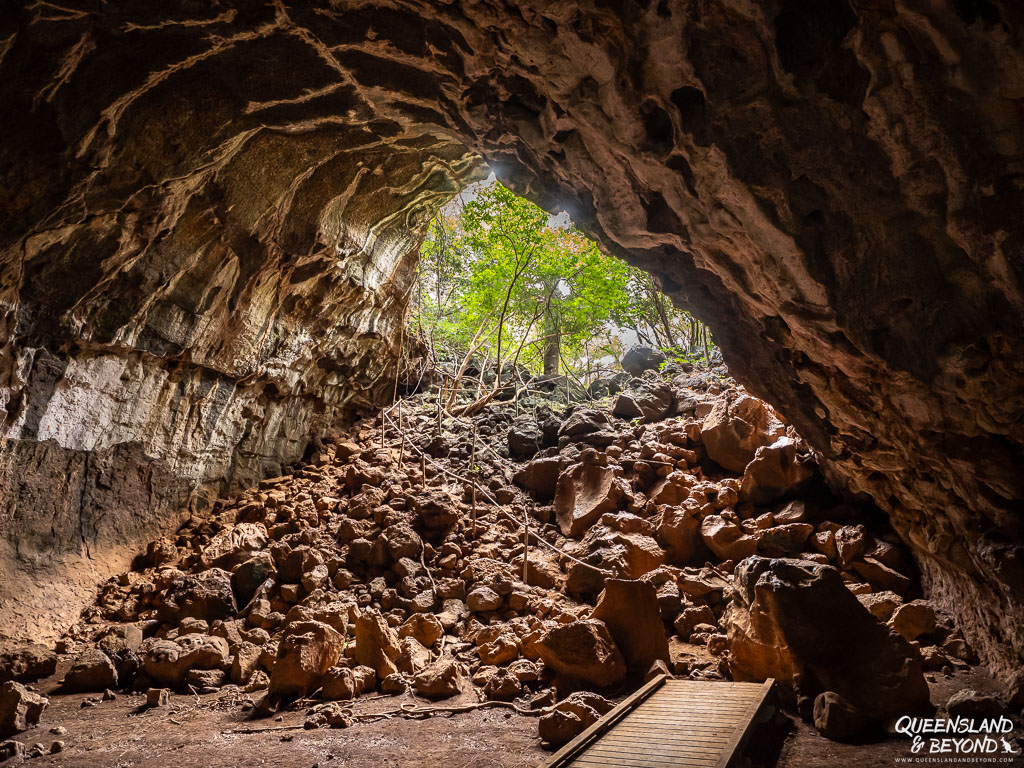
Disclaimer: This post contains some affiliate links.
VISITING UNDARA VOLCANIC NATIONAL PARK: KNOW BEFORE YOU GO
Undara Volcanic National Park is in the Gulf Savannah, a region that stretches from Cairns all the way across to Broome in Western Australia.
If you’re travelling the Savannah Way, Undara is usually a must-do stop.
For us, it was the first stop on our Gulf Savannah loop.
BEST TIME TO VISIT UNDARA VOLCANIC NATIONAL PARK
The Gulf Savannah gets very, very hot over the summer (= wet season) so it’s best to visit during winter or at least the cooler months (April to September).
If you want to stay overnight, the resort at Undara only operates in the dry season, typically late March to September/October.
In June, it wasn’t particularly ‘cool’ for us either, with high 20°Cs, if not 30°C+, every day. It hardly dropped below 17°C overnight but it can get colder.
HOW TO GET TO UNDARA VOLCANIC NATIONAL PARK
In Queensland terms, it’s relatively close to Cairns, being about 250km southwest of the city.
From Brisbane, it’s about 1,700km or roughly an 18-hour drive. It’s a long way, which happily coincides with the meaning of Undara (= long way, though that more likely refers to the lava tubes).
Leaving the Savannah Way, it’s about 6km to the national park with a further 9km to the resort where you’ll probably want to stay the night.
The road to Undara Discovery Resort is completely sealed. If you want to go to Kalkani day-use area to do the hike there, that part of the road is unsealed (but easily 2WD-accessible).
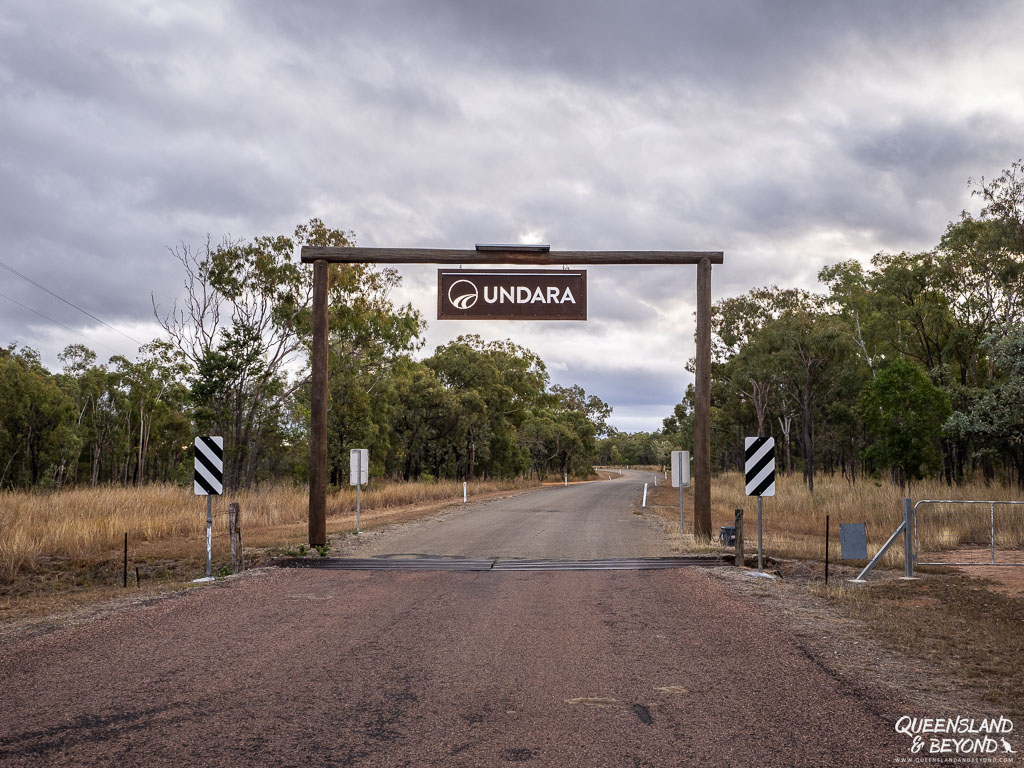
ACCOMMODATION OPTIONS
If you want to stay in or near the national park, there aren’t a lot of options for accommodation out here.
There is no camping in the national park other than at the Undara Discovery Resort. You could also stay in Mount Surprise (50km away) or Mount Garnet (94km away). Both offer caravan parks.
UNDARA DISCOVERY RESORT
We stayed at Undara Discovery Resort for two nights in an unpowered campsite (which we’re learning are becoming rarer in tourist parks all the time!).
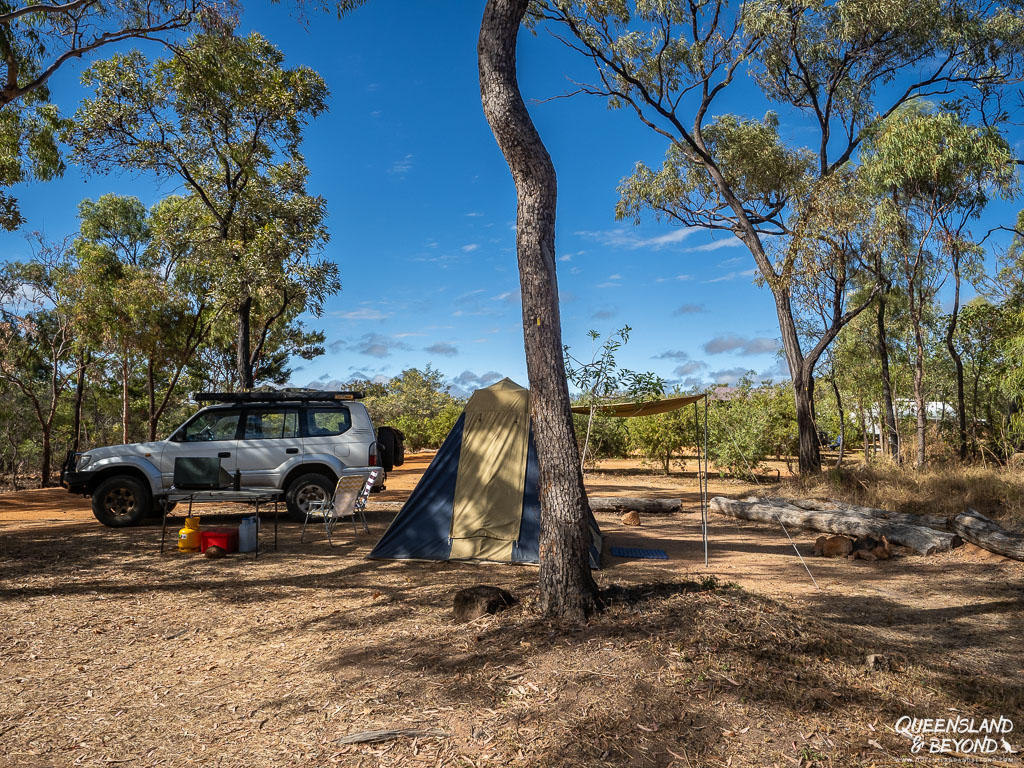
If you don’t want to camp, you can also stay in cabins or safari tents (with shared facilities). The repurposed railway carriages looked fabulous and are possibly worth the extra expense (starting at $250 a night).
We peeked into the safari tents and I can’t say that we were too impressed. There’s little privacy between them and the tents were very utilitarian (it’s basically just a metal-frame bed). You could even see some mould on the tent walls (understandable in this region). But unfortunately this isn’t somewhere where I would like to stay given prior mould exposure and health problems.
I was quite happy with our campsite in the tent-based section. It was a bit slopey but we had no neighbours and despite being at Undara in peak season, the resort felt fairly quiet.
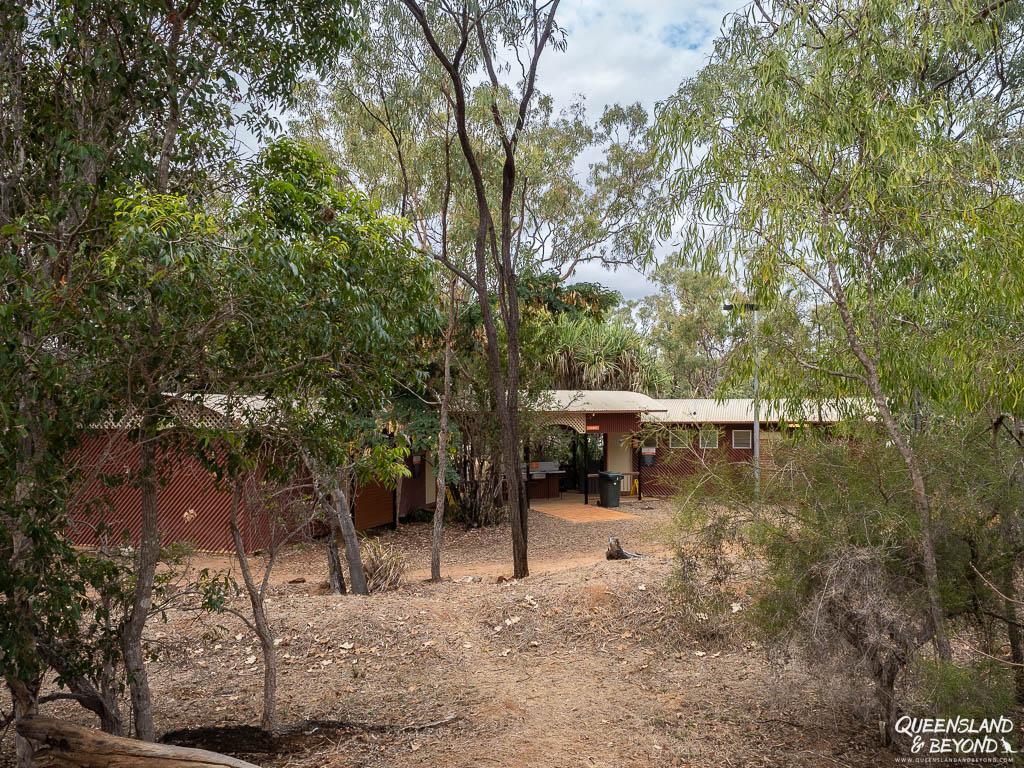
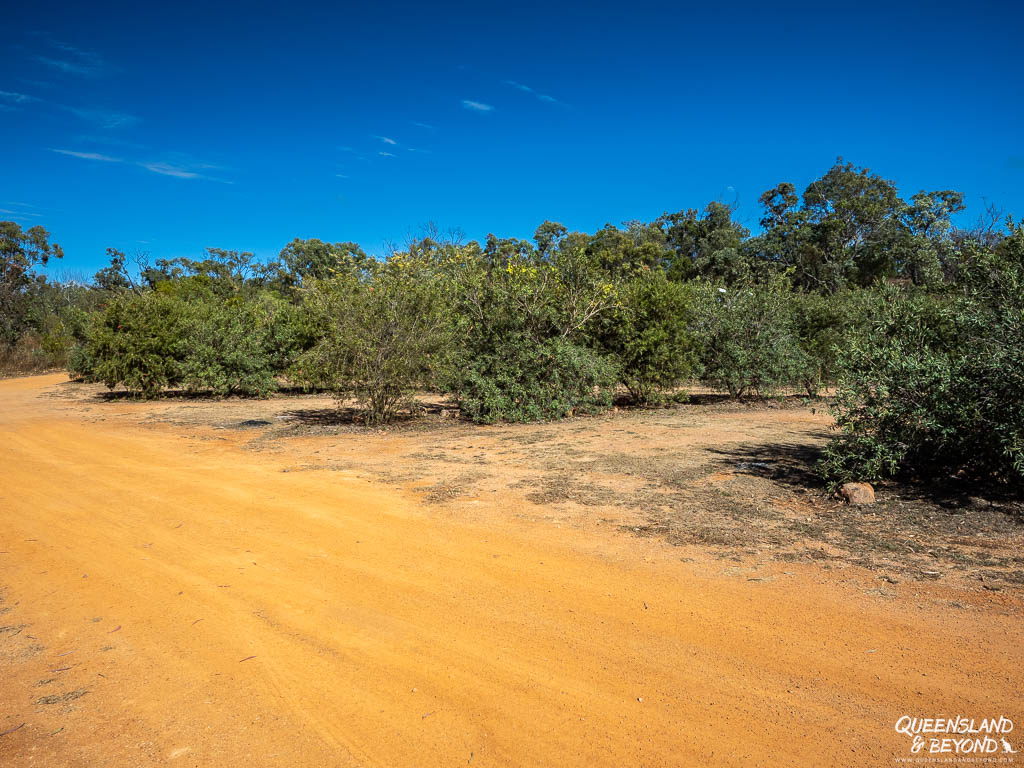

If it was fully booked, the camping experience might be less enjoyable.
Undara Central (basically the reception, bistro and bar area) is very cool as it’s built around refurbished railway carriages, and gives the space a historic pioneer vibe.
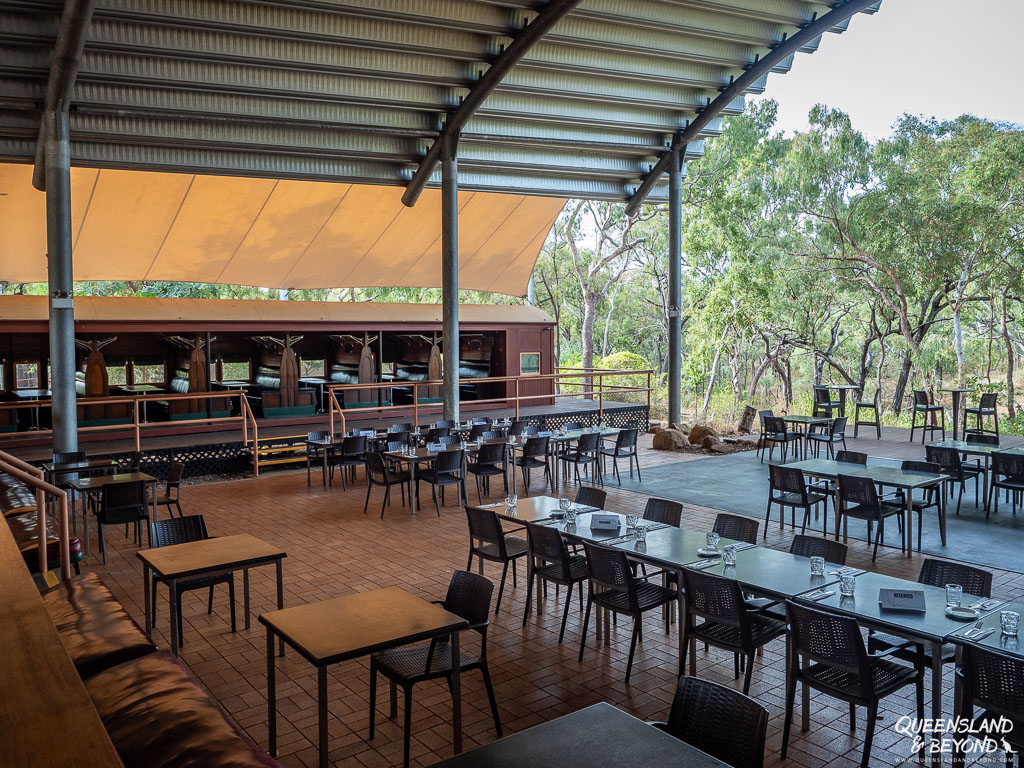
The Saloon Car Bar was a super popular spot for watching State of Origin on one of the nights. You could hear people hollering right across the resort (until Queensland started losing, that is).
CAMPING AT UNDARA DISCOVERY RESORT AT A GLANCE
PROS: Semi-shaded sites in the unpowered tent section; clean facilities with excellent showers; unique bar/restaurant on site; walking tracks across the property; offers other accommodation options (e.g. cabins, safari tents, etc.)
CONS: No shade in the unpowered camper trailer/motorhome section; some tent sites somewhat uneven and slopey; laundry (washing machine) expensive; camping areas might be quite noisy if busy
COST: $43 (unpowered) / $48 (powered) (2024); Undara Discovery Resort
PERSONAL ENJOYMENT RATING: 3/5
EXPLORING UNDARA VOLCANIC NATIONAL PARK
You don’t need much time to explore Undara Volcanic National Park. One to two days will do most people unless you want to relax for a while or explore every single walking track across the property.
The national park isn’t that small but you can only access a very small portion of it. To see any of the lava tubes, you’ll need to join a tour.
The actual lava tubes (or what’s left of them) run 90km to the north and 160km to the north-west, making it Australia’s longest system. Scientists estimate that the lava rivers flowed at a temperature of 1,200°C and slowly bubbled over, thereby creating crusted over and solidified tunnels that were left empty when the lava flow eventually cooled and stopped. Tunnels that couldn’t hold collapsed, leaving caves and depressions behind.
All this is covered by semi-evergreen vine thickets, a type of dry rainforest, now.
1. TAKE A TOUR OF THE LAVA TUBES
It would be silly to come all the way to Undara and not do one of the tours (even though the husband and I would much prefer to explore the tubes by ourselves).
The tours are run by field guides and commence at Undara Discovery Resort.
The resort offers two types of tours: the Archway Explorer Lava Tube Tour and the Wind Tunnel Explorer Tour.
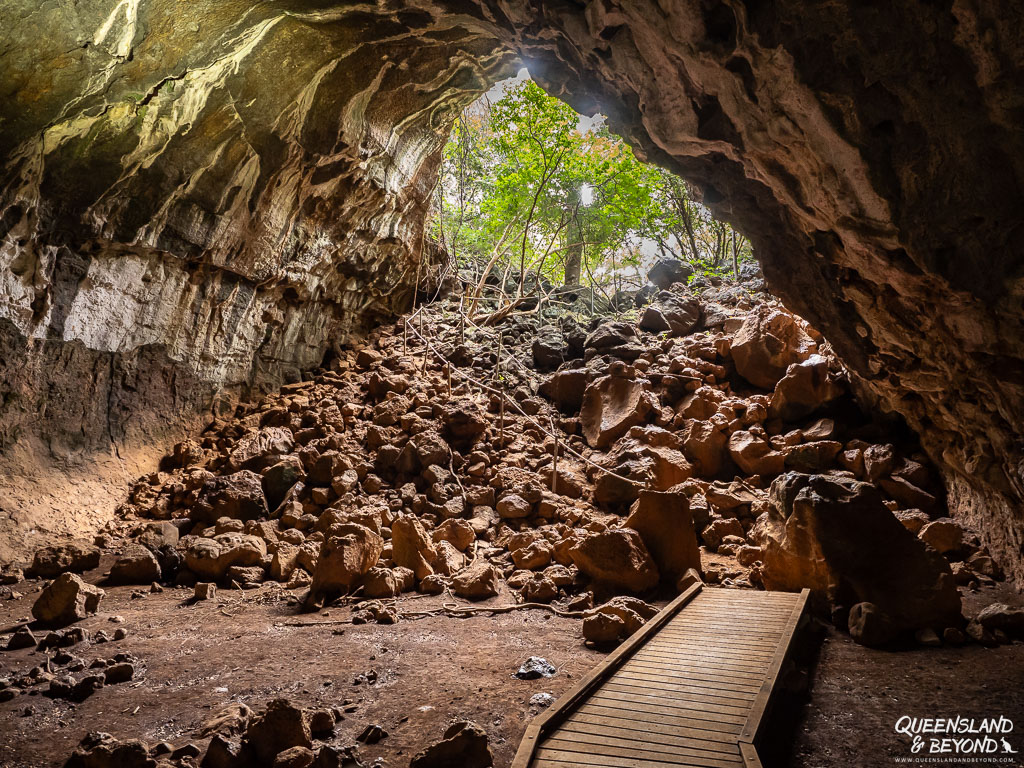
The Wind Tunnel Explorer Tour is more ‘adventurous’ (not really) and requires you to be able to walk on uneven ground (true) as you head down into the tunnels and through a completely dark lava tube inhabited by plenty of micro bats.
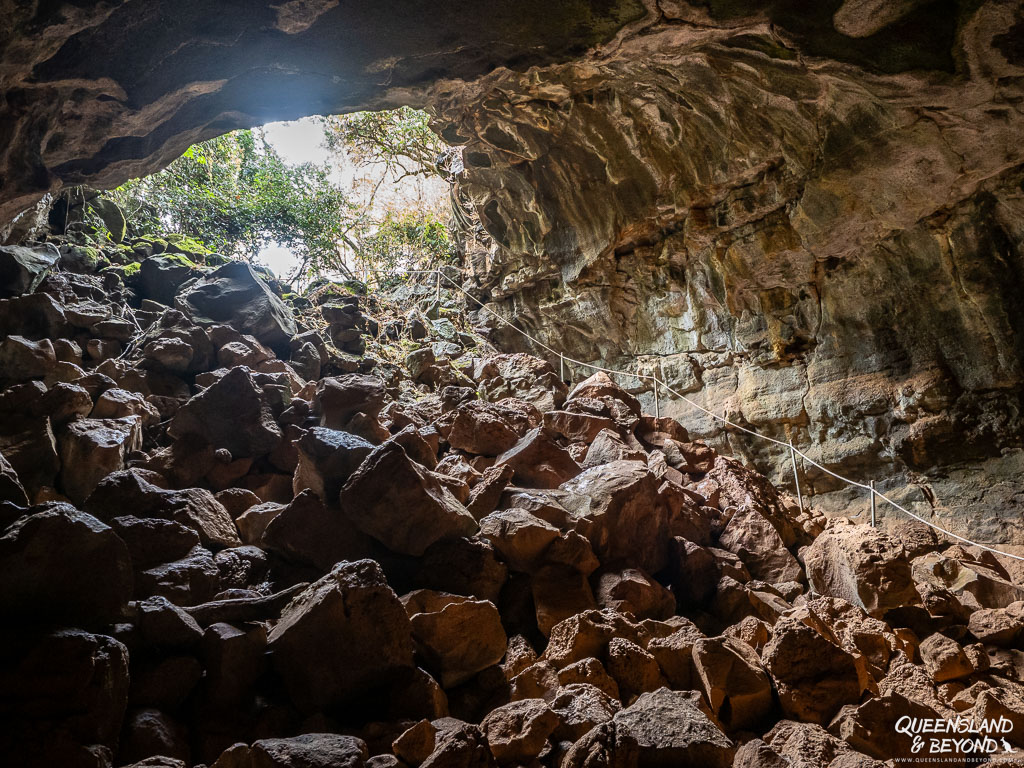
The Archway Explorer Lava Tube Tour, on the other hand, mostly follows boardwalks and is best for families with small(er) children and those with mobility issues.
The discovery resort also offers a sunset tour that focuses on wildlife spotting (for the price tag, I’d have very high expectations I must say).
UNDARA TOURS AT A GLANCE
ARCHWAY EXPLORER LAVA TUBE: $71 pp | 2 hours | multiple tours a day
WIND TUNNEL EXPLORER: $71 pp | 2 hours | 8AM + 10:30AM
WILDLIFE AT SUNSET: $71 pp | 2 hours | late afternoon departure
BOOKINGS: Undara Discovery Resort Activities
OUR EXPERIENCE OF THE WIND TUNNEL EXPLORER TOUR
Given our inclination for hiking and exploring, we naturally chose the Wind Tunnel Explorer Tour.
Our tour was fairly interesting and I loved walking through the dark lava tube. But … the pacing of it was far too slow for us. I had a lot of trouble not drifting off in my thoughts, which is a bit unusual for me since I tend to like these sorts of tours.
Enjoyment of these things always depends on your tour guide, and ours was just a bit ‘too many dad jokes and slow explanations’, and not enough stuff to look at while he was meandering on.
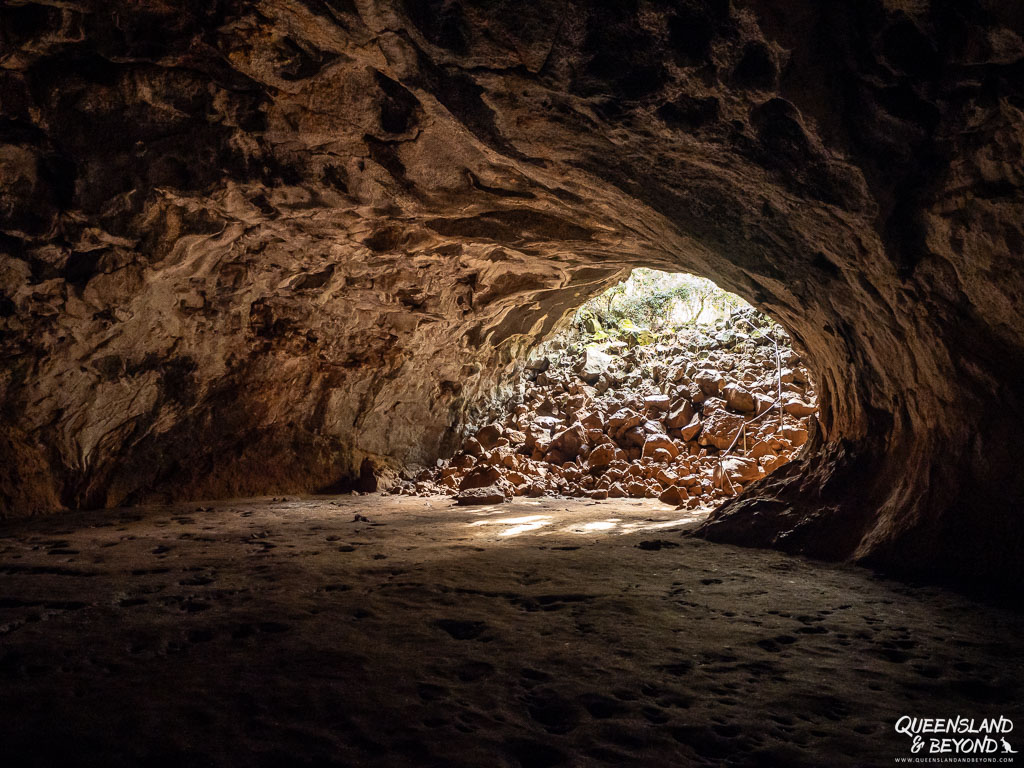
The entire tour is about two hours but a good part of that is spent on the bus getting to/from the site, walking through the first short tube, looking at info panels, and finally getting to the Wind Tunnel.
The best part was walking through the completely dark Wind Tunnel, illuminated only by people’s phone torches and the guide’s larger torch.
You could hear the bats communicating and flying above you, feeling clearly disturbed by these 20 odd people walking through their bedroom.
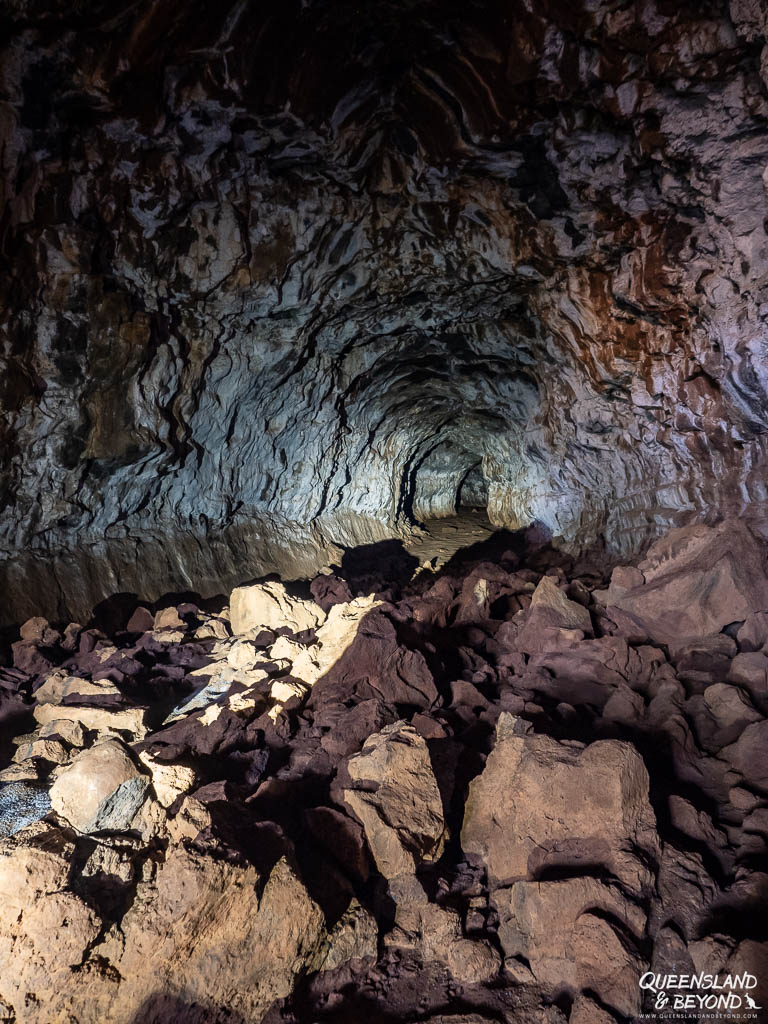
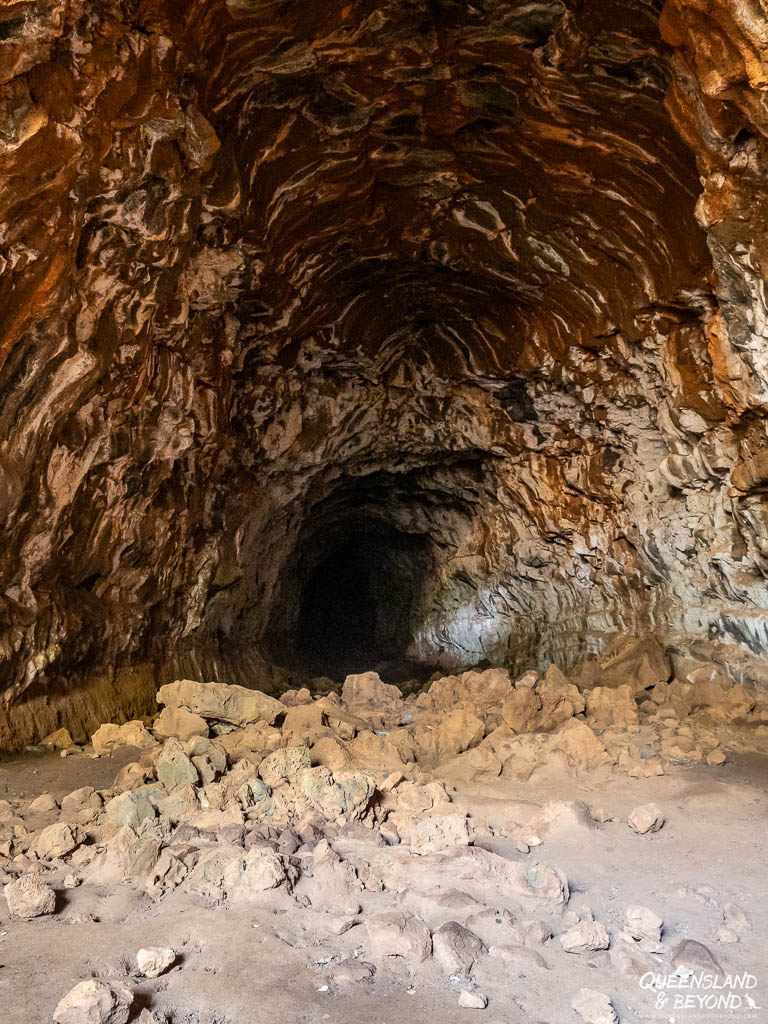
You are asked not to shine your torch light anywhere but on the ground and be quiet, but it is somewhat inevitable that you disturb the bats as you try and find a path through the rocky dark tube.
I’d still recommend doing a tour because otherwise you won’t actually see these incredible tunnels but keep your expectations low.
2. GO ON A HIKE IN UNDARA VOLCANIC NATIONAL PARK
Apart from taking a closer look at the lava tubes, we enjoyed going on a hike at Undara.
There are several walking tracks across the Undara Discovery Resort property, ranging from 2km to 8km walks.
We were a bit time-pressed so we only had time to do the Bluff Circuit Walk (2.3km) one evening, which turned out to be quite nice.
The Bluff offers some nice views over the resort, the lava plains and the open eucalyptus Savannah country. I had hoped for sunset views but that didn’t quite eventuate that night.

Beyond the Discovery Resort bush walks, there are two walks in the national park per se. One takes you around the rim of Kalkani Crater, while the other goes across granite country with some splendid views of the surrounding countryside.
KALKANI CRATER RIM WALK (2.5KM)
The crater rim trail sounded far more exciting (to me) than what it turned out to be.
BASIC TRAIL INFO: KALKANI CRATER RIM WALK
DISTANCE: 2.5km loop
DIFFICULTY: Easy-Medium (Grade 3)
TIME: 45 min - 1 hour
TRAILHEAD: Kalkani day-use area
Following a steepish walk up to the rim (about 600m), it’s a quick and flat enough walk around the rim. You get some intermittent views but don’t hold your breath for amazing crater views.
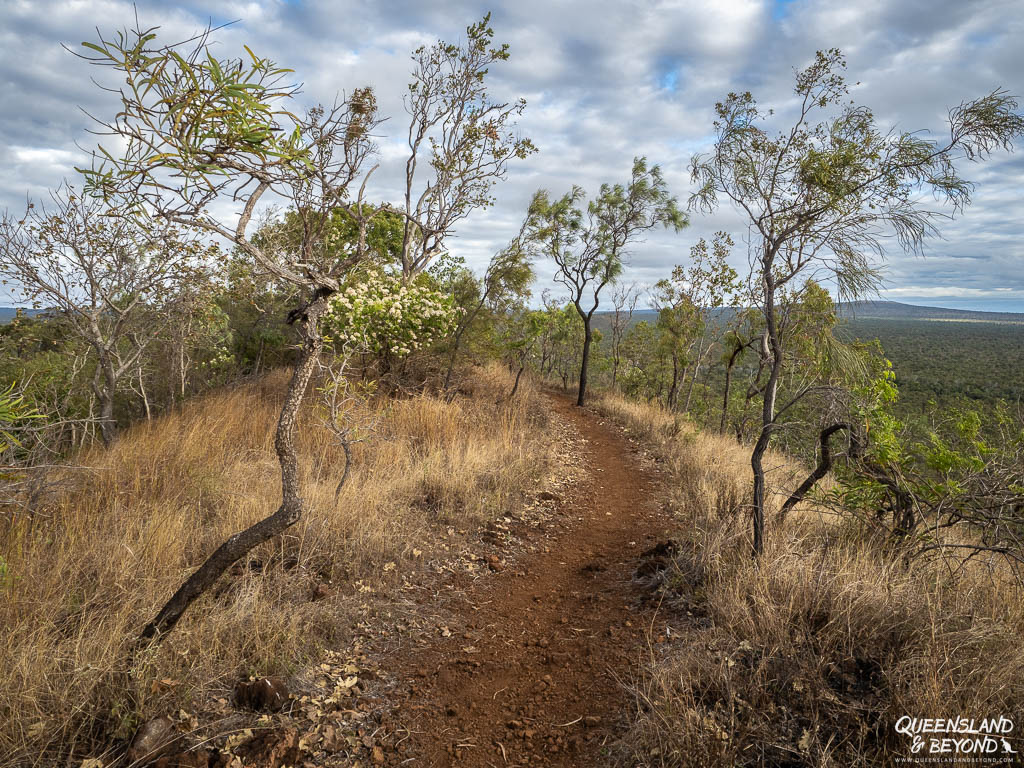
You can make out the bowl but it is completely covered in the semi-evergreen vine thicket vegetation (unlike Yulludunida at Mount Kaputar, which is incredible).
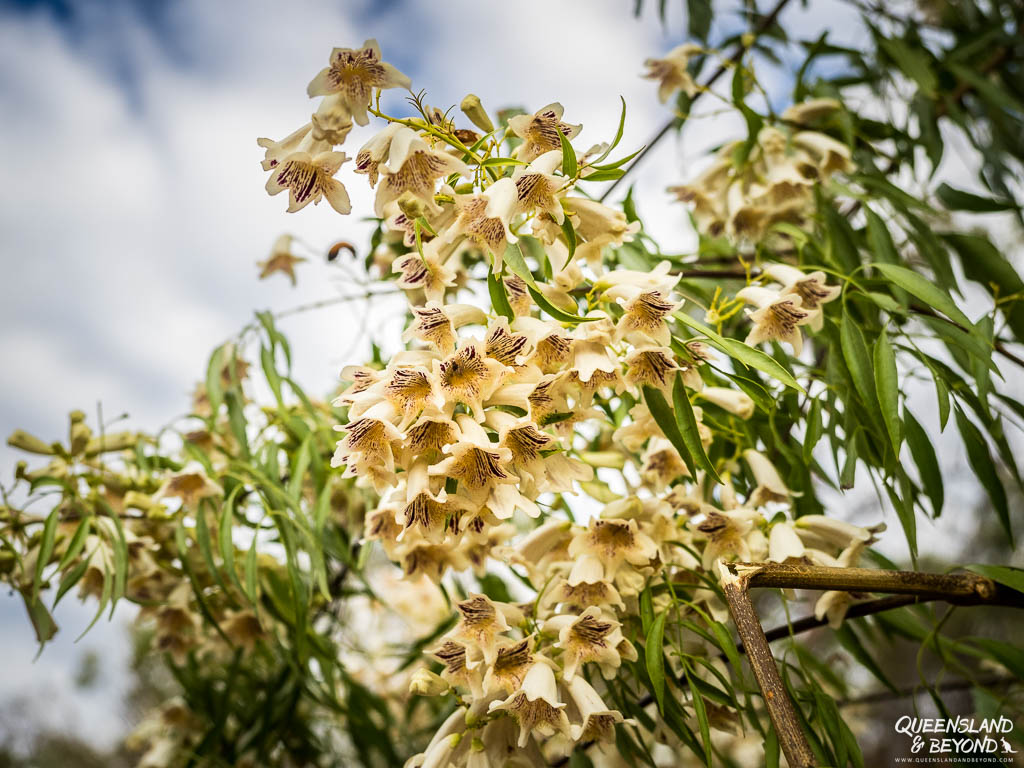
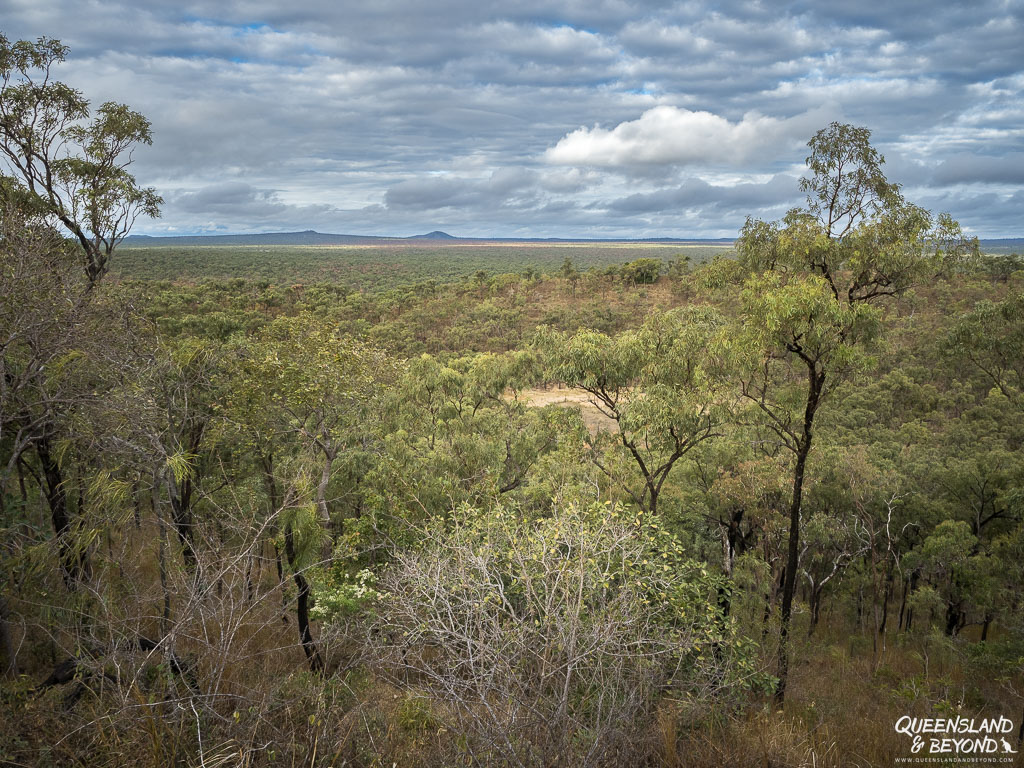
There are plenty of interpretive signs along the rim track to make this walk a little more educational and interesting.
ROSELLA PLAINS LOOKOUT TRACK (12KM)
Of the two hikes at Undara Volcanic National Park, the Rosella Plains Lookout Track is the one worth doing. It is a much longer loop but we found it far more interesting and scenic than the crater rim walk.
BASIC TRAIL INFO: ROSELLA PLAINS LOOKOUT TRAIL
DISTANCE: 12km loop
DIFFICULTY: Medium (Grade 4)
TIME: 3-4 hours (longer if it's hot)
TRAILHEAD: Behind the resort (Undara Central) - Find the signs to Atkinson's Lookout if you want to do it anti-clockwise; otherwise follow the signs to the pioneer hut
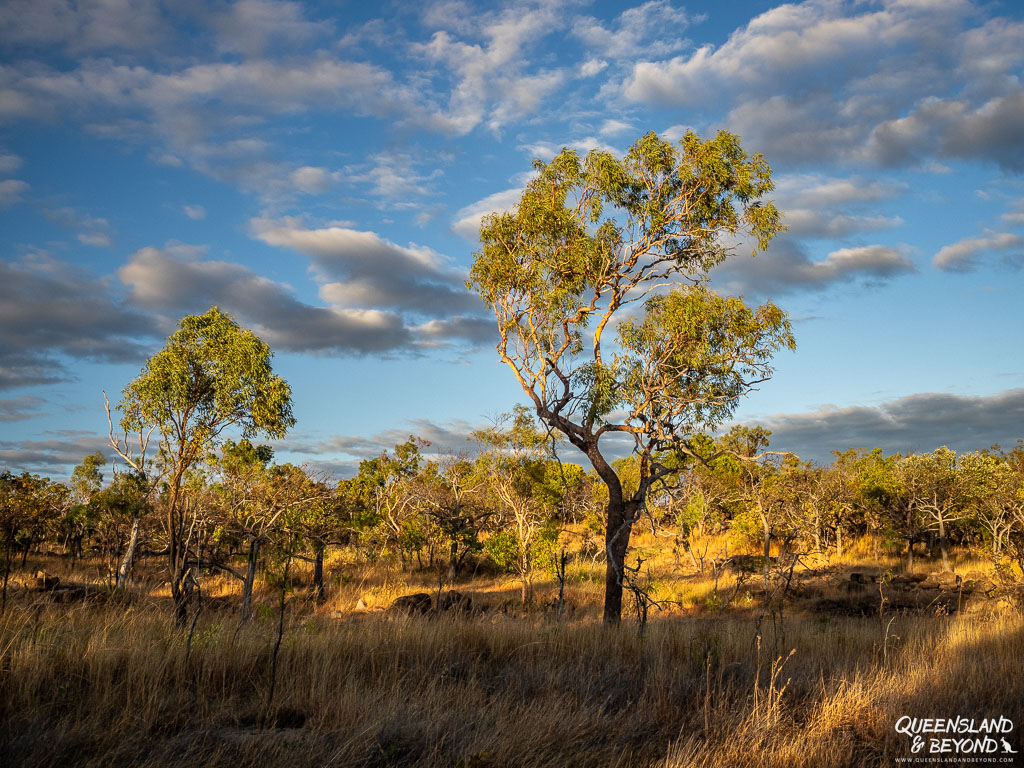
QPWS suggests to do the circuit hike clockwise. But in true ‘us fashion’, we didn’t realise that until later and did it anti-clockwise.
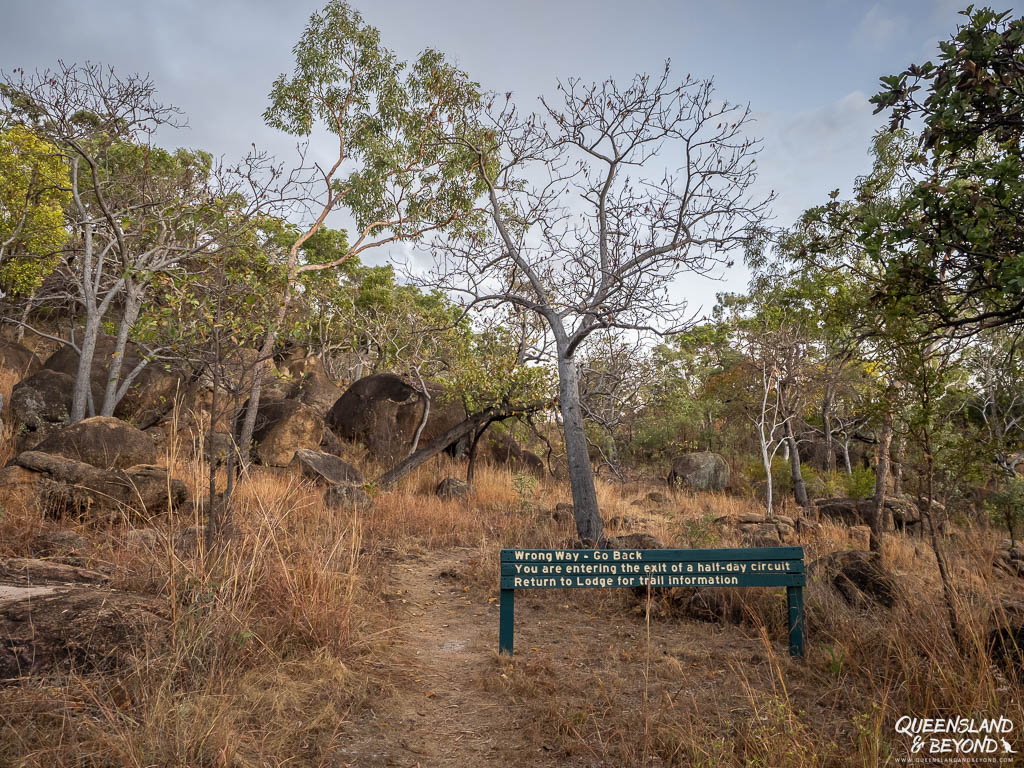
Having done it anti-clockwise, that’s also what I would suggest as you avoid the short but very steep ‘cardiac climb’. You’ll be coming down the hill rather than puffing up.
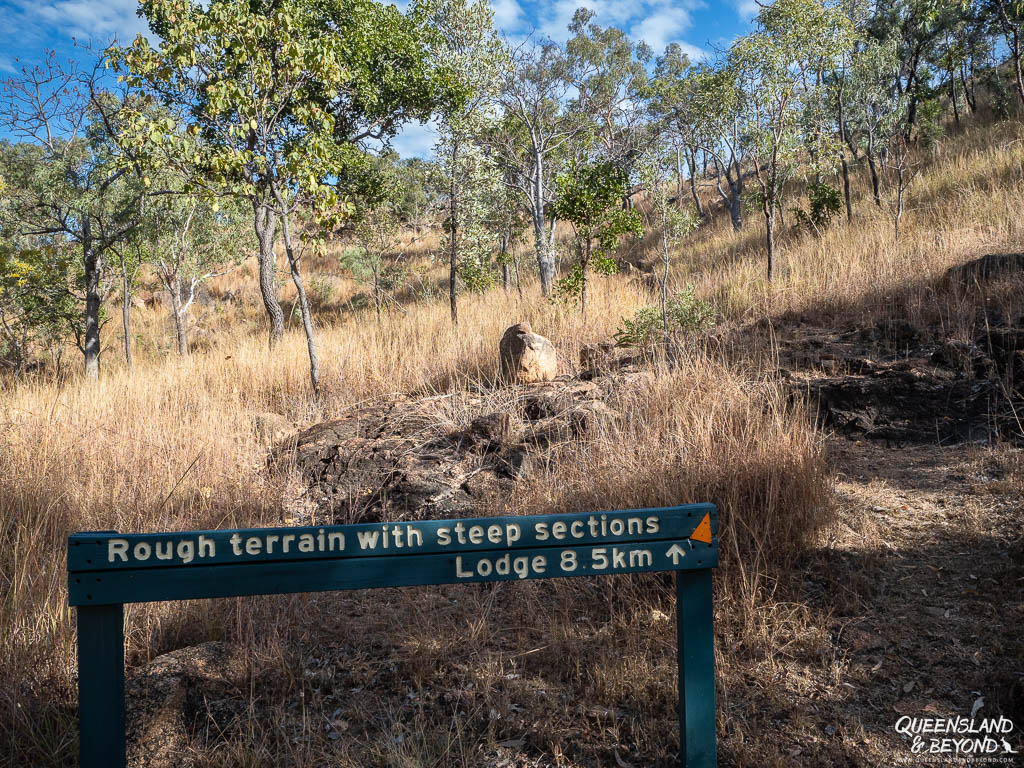
There’s a few lookouts along the way, the best one being the Rosella Plains Lookout at about the half-way mark.
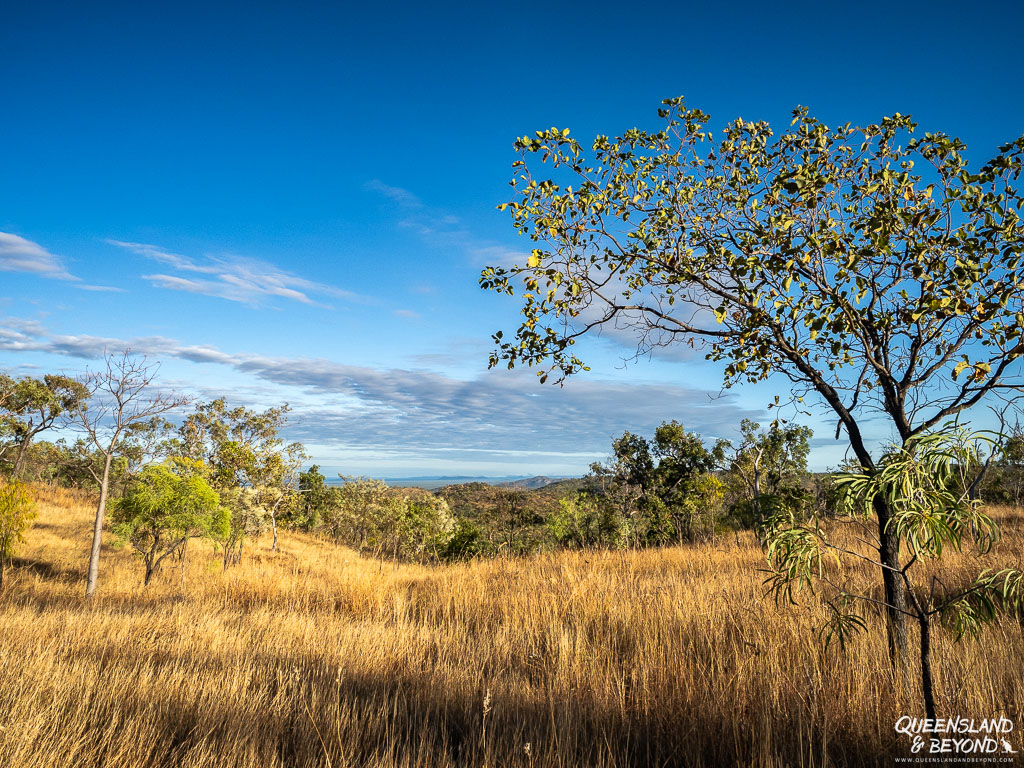
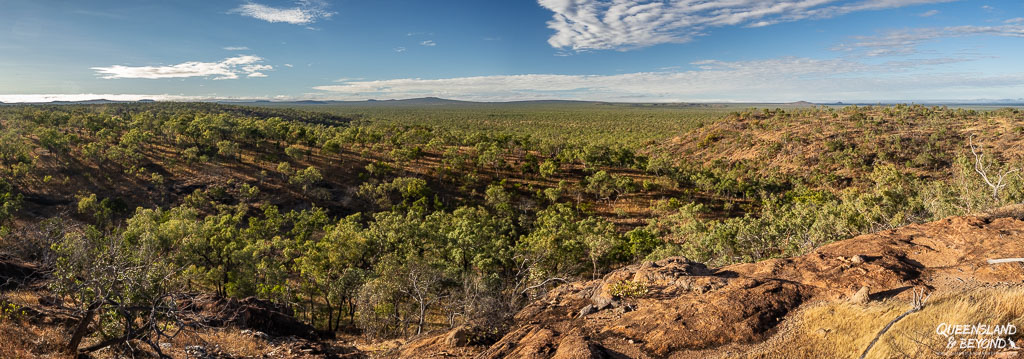
If you don’t have the energy or time for the full walk, maybe just hike to Atkinson’s Lookout (3.8km return). Judging by the cairn left, many people have done exactly that.
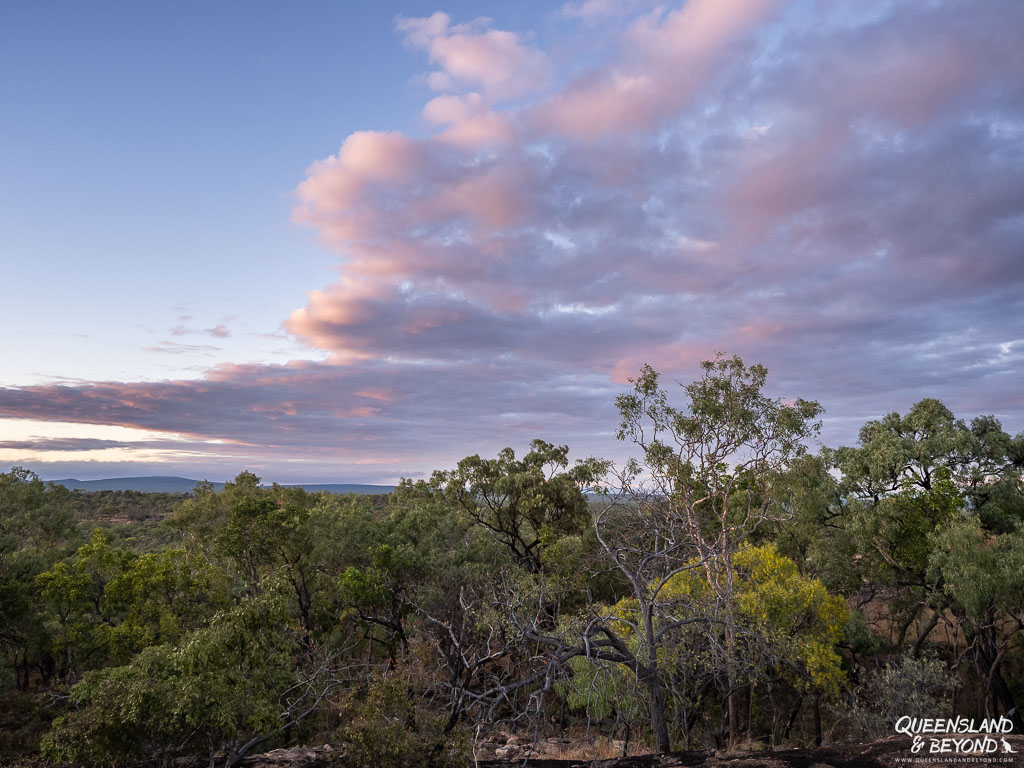
The views are ok but in my view nowhere near as splendid as from Rosella Plains Lookout.
The last (or first if going clockwise) two or so kilometres are not as interesting as you traipse through open woodland. But there’s the pioneer hut to poke your head into and learn a bit more about the settler history of the area.
The walk is very exposed, there’s almost no shade except for the open woodland section at the end. We left around 6:30am and by the end I was done as it was getting quite hot.
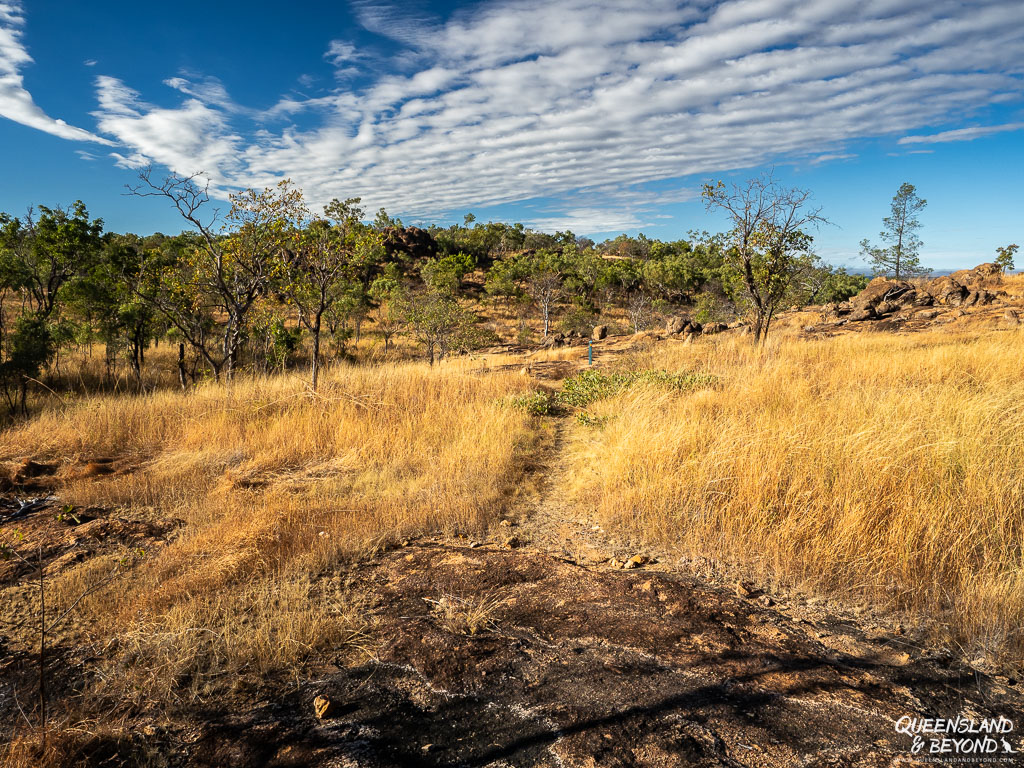
Remember to take a hat and plenty of water.
3. LEARN ABOUT THE PASTORAL HISTORY OF THE AREA
While always having been Aboriginal land, much of the national park was also once part of pastoral stations. Some of the places, like Rosella Plains Lookout, are named after these former cattle stations.
If you’re keen on learning a bit more, it’s worth walking to the (replica) Heritage Hut. It’s a slab hut reminiscent of typical 19th century bush huts. It’s only about 2km from Undara Central and a very flat walk.
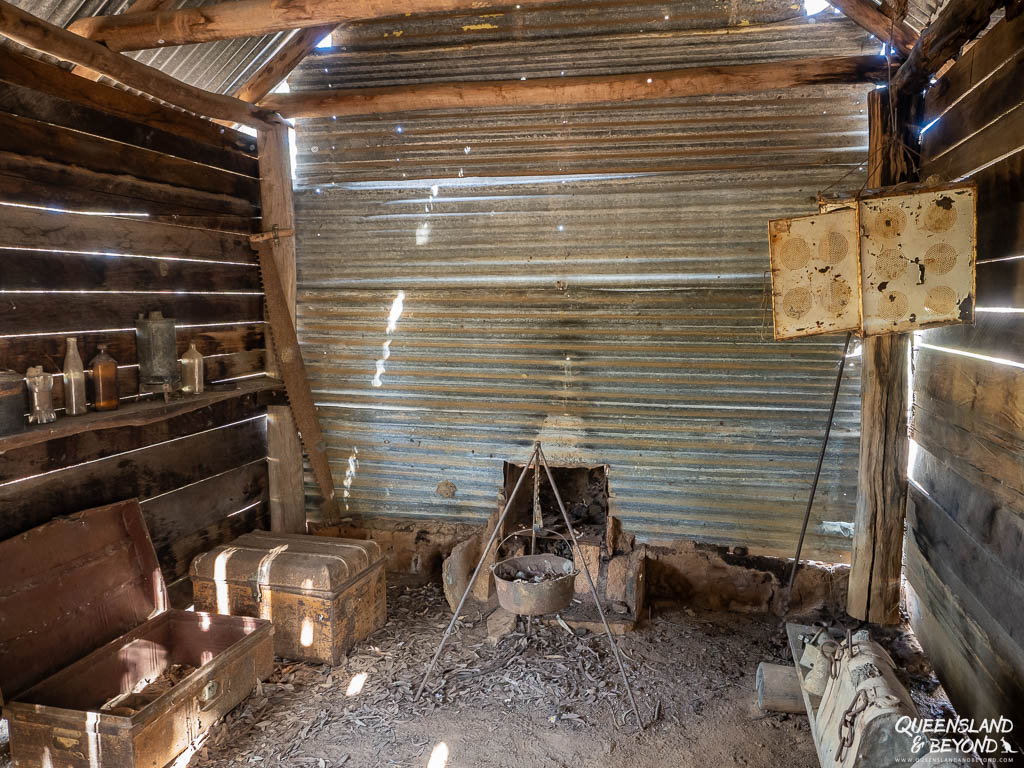
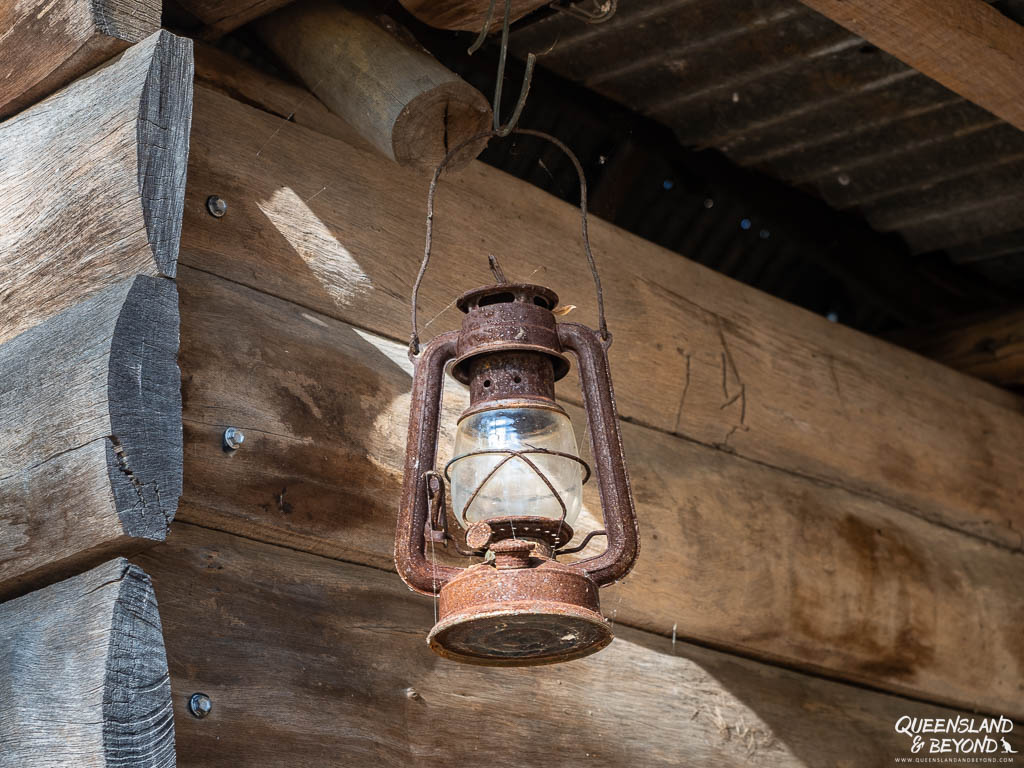
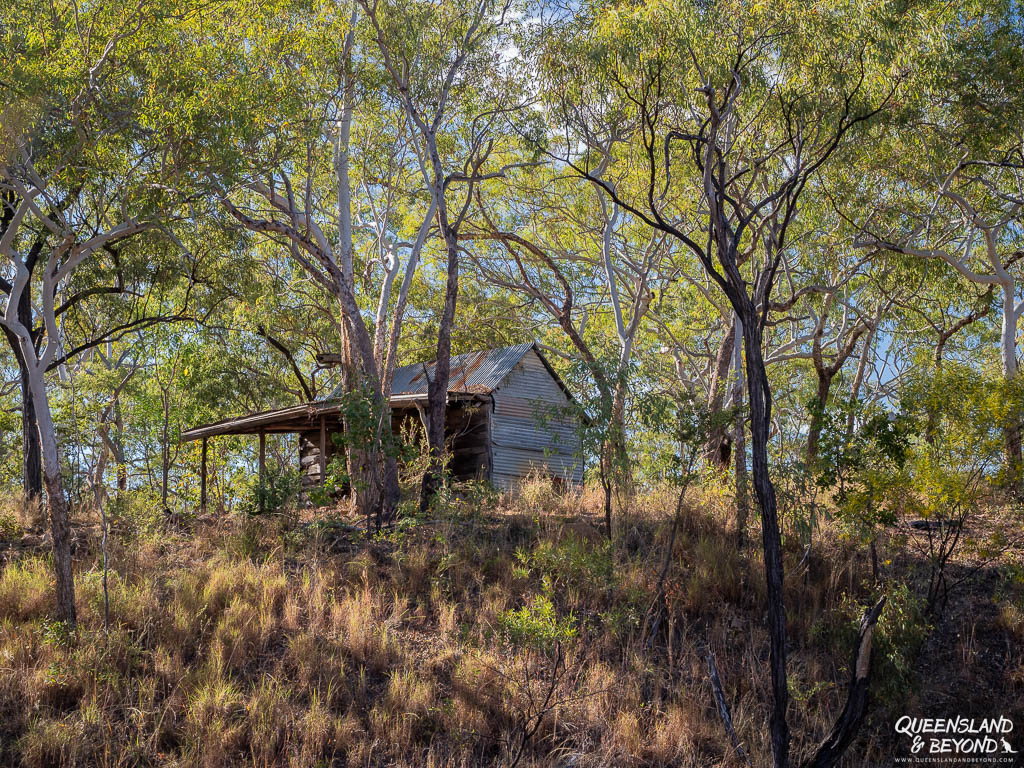
The sad reality of what settler life often meant for Indigenous Australians:
The expansion of pastoralism in the north had catastrophic consequences for Indigenous Australians. Aboriginal people tried to move the settlers on by frightening them and harassing or spearing stock. Many settlers reacted with brutal, indiscriminate and, often, deadly force. Killing escalated on both sides. It’s estimated that 400 Europeans, and probably ten times as many Aboriginal people, lost their lives in the fighting between 1860 and 1897.
Queensland Parks & Wildlife Service
It’s confronting every time I read things like that again.
We’ve seen a fair few huts, woodsheds and other pastoral remnants on our national park adventures over the years so coming across the hut wasn’t really all that unusual.
However, I was really surprised to learn that a telegraph line was built here in the early 1870s to connect the town of Cardwell on the east coast with Normanton on the Gulf of Carpentaria.
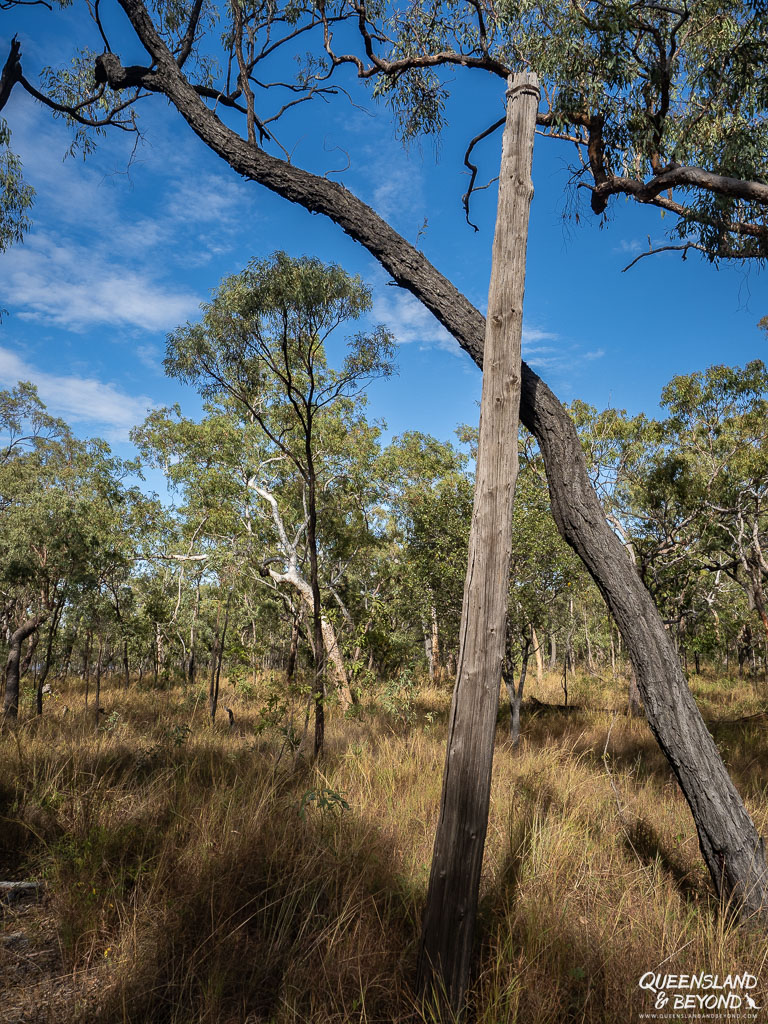
In 1866, explorer Frederick Walker set off with his party to map a route from Cardwell to the gulf. I cannot really fathom how tough these early explorers were, just setting off into the unknown, hoping to find a route. In fact, Walker didn’t make it and died of ‘gulf fever’ along the way.
At the time, South Australia and Queensland were racing to built Australia’s first overland telegraph line to connect to Java, Indonesia (and from there to the motherland).
Ultimately, the South Australian line (Port Augusta, Alice Springs, Darwin) won as Java was connected to Port Darwin, and not Normanton.
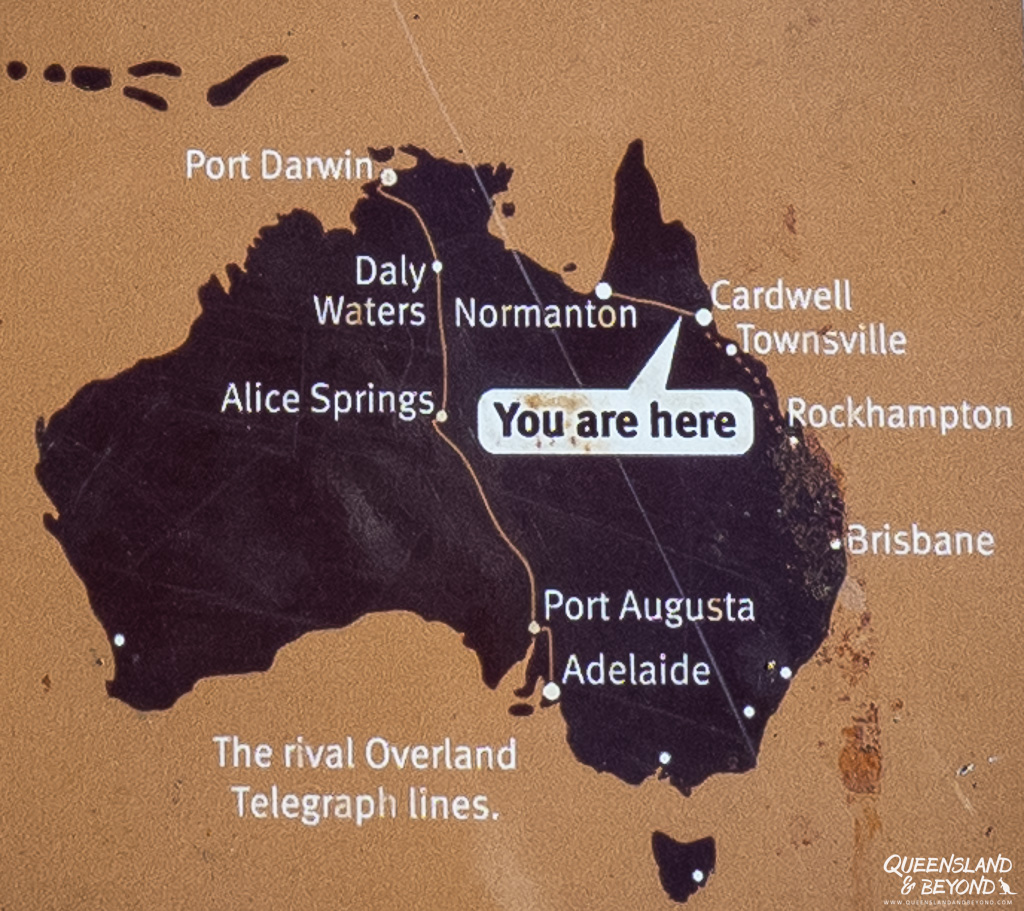
FINAL THOUGHTS
Undara is an unusual national park in Tropical North Queensland.
You’re staying in a commercial tourist resort and have to join a tour to see the lava tubes. This may not be so unusual in other parts of the world but in Queensland, and across Australia, it is.
If you’re travelling along the Savannah Way or going to the Gulf Savannah region, plan a couple of days to explore the national park and learn more about the area’s volcanic past.
Definitely worth it.
Happy exploring,

MORE INFORMATION
Find more details on Undara Volcanic National Park, including directions, weather alerts and seasonal closures, check out Queensland Parks & Wildlife Service.
SAVE THIS POST TO PINTEREST
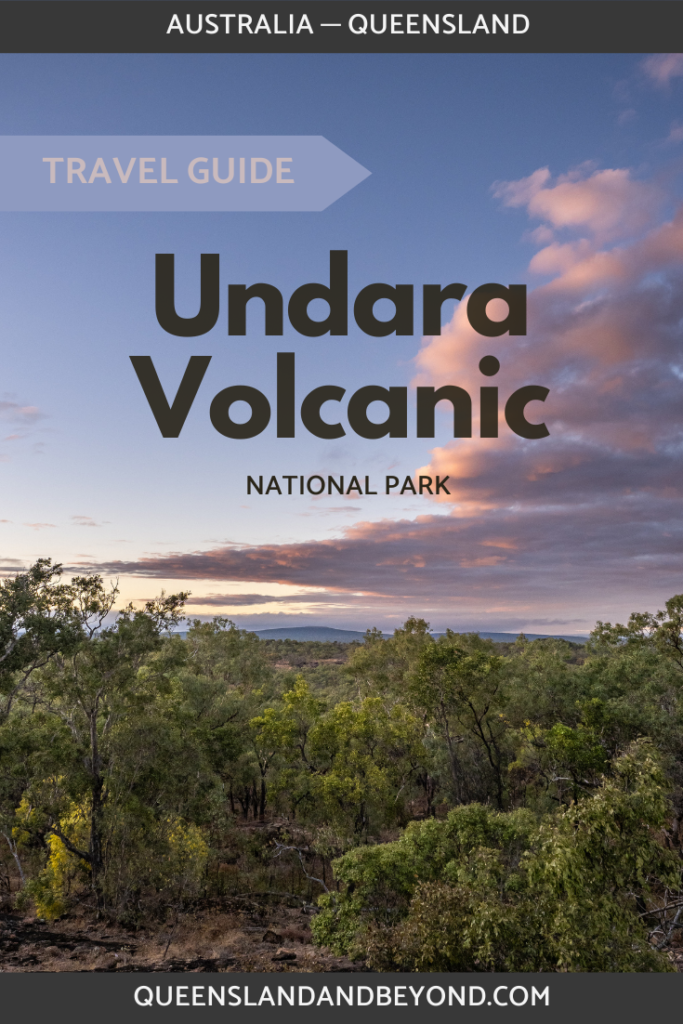
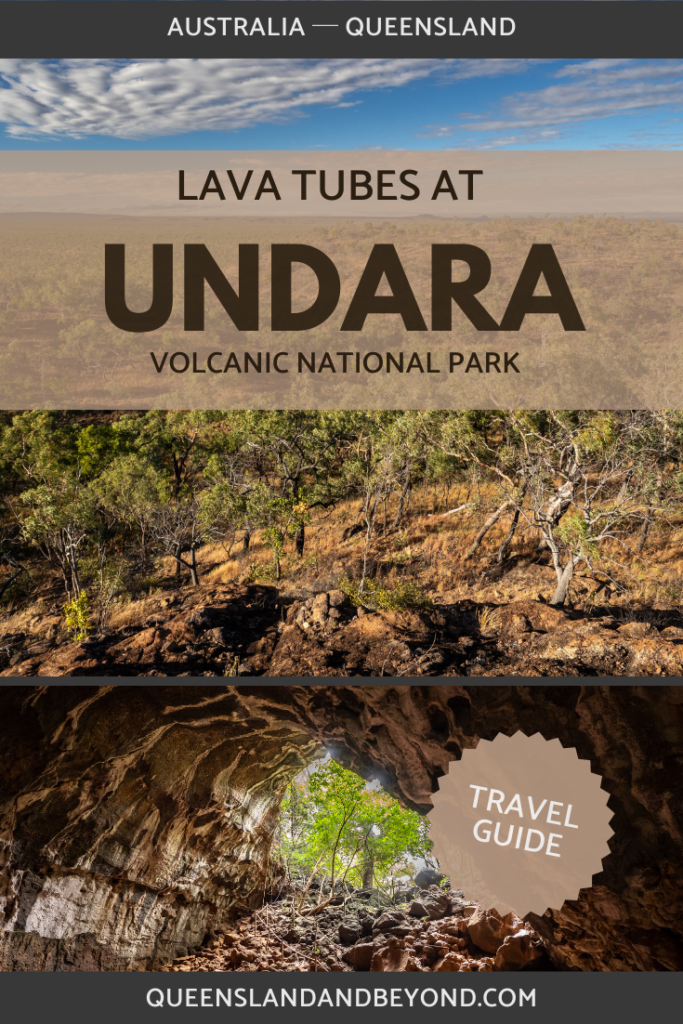

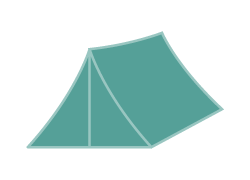
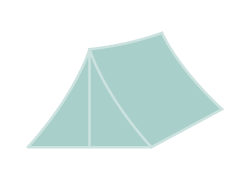

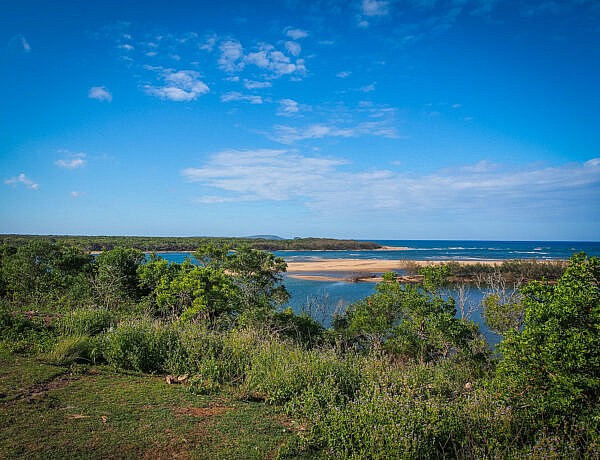


No Comments